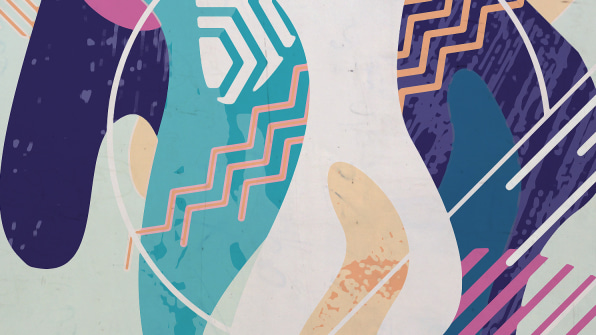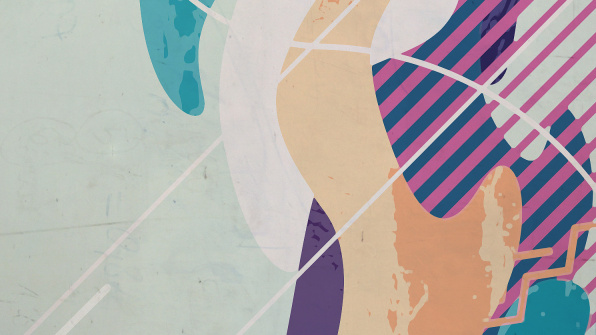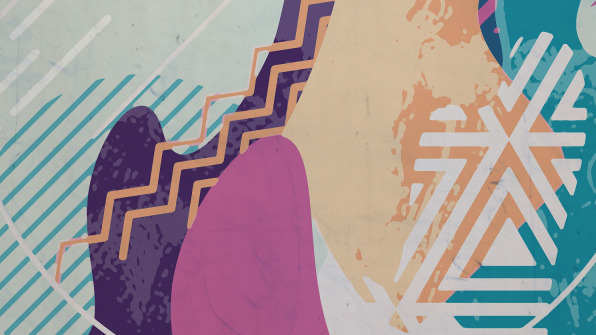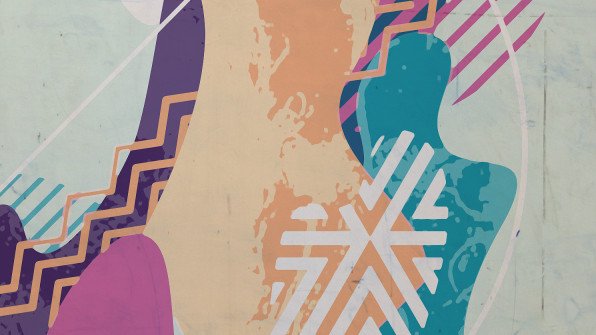A Designer’s Guide To Brainstorms That Are Actually Useful
Rule No. 1: Always say “yes.”
[Illustration: Rogotanie/iStock]
The Apollo 13 Mission Control team faced a huge number of seemingly insurmountable obstacles after an oxygen tank exploded on board the 1970 mission to the moon. They needed to find a new route that would get the astronauts back to Earth quickly with a limited supply of life-supporting fuel and power.
The most pressing problem was a buildup of carbon dioxide in the ship. Without a replacement scrubber, stored out of reach in a different module in the craft, the crew would soon asphyxiate from their own exhalations.

In a later scene, a group of engineers tasked with devising a new filtration system dumps the same items aboard Apollo 13 onto a table. They proceed to prototype a fix that the crew can build from the objects at hand, ending up with a literal “duct-tape solution.”
In each case, the route to resolving the problems seemed relatively straightforward, if fraught with urgency: get a bunch of smart people in a room, and have them collectively come up with ideas until the best solution was found. We can assume that the film was faithful to what happened in the real life control room in Houston, but what conditions created such a successful environment for brainstorming?
The term “brainstorm” was popularized by the ad agency executive Alex Osborn in his 1953 book Applied Imagination (though he had outlined his method in a 1948 book, Your Creative Power). Osborn claimed that by organizing a group to attack a creative problem “commando fashion, with each stormer attacking the same objective,” creative output could be doubled.

- Defer judgement
- Reach for quantity
Deferring judgment reduces social inhibitions in the group—no one would be stigmatized for shouting out a crazy idea. By reaching for quantity, participants would boost their overall creative output and increase the likelihood of coming up with innovative solutions.
Brainstorming in a group might not work as well for original ideas, as compared to individuals working independently. However, brainstorming adds value to the creative process in ways that don’t just involve coming up with ideas.

BRAINSTORMING ISN’T ABOUT NEW IDEAS, REALLY
It turns out that the power of brainstorming doesn’t really come from spontaneously generating new ideas. Rather, the real strength in brainstorming stems from the process’s ability to:
- Quickly generate lots of ideas, to help get an overview of the conceptual landscape. These are not necessarily new ideas (or good ideas). They may have been brewing for a while as individuals considered the problem beforehand. These ideas can become the seeds for solutions, to be investigated with prototypes. [The] goal is to give you a mass quantity of ideas quickly . . . not solutions, but the seeds to possible solutions. Solutions take real hard work. Brainstorming gets you the lay of the land quickly for possible solution areas to investigate. But good solutions are like body building, there’s no way to cheat the hours of the gym you got to put in,” says Art Sandoval, vice president of engineering at LUNAR Design.
- Gather a team into a physical space where they can share perspectives on the problem and are all aware of the potential solution spaces as they are surfaced. Done well, it can energize a team (and done poorly, it can deflate one).
- Get clients or stakeholders to buy into the design process, and also learn what is important to these decision makers. “[Brainstorms are] excellent at helping clients buy into the creative process…they get to join in on the brainstorms, they see lots of ideas, they get to vote for their favorites and a dialogue happens during the voting process that is crucial,” says Yona Belfort, product designer at Vital Innovation. “Some kind of sorting always follows a brainstorm, and it’s during this process that one can learn from the client. What have they already done or are currently doing? What can’t they do? Won’t they do? And most importantly, what are they excited about?”


BEFORE THE BRAINSTORM
A key part of the brainstorming process is the facilitator—someone who will lead the session, keep track of time, and set up the space for the group. This facilitator can also make sure that the group comes prepared with a mission framed by problem statements.
SET A MISSION
Your brainstorming session should have a clear goal. What problem(s) are you surfacing ideas for? What is the best method for coming up with this goal?
Stanford’s d.school design thinking framework alternates between generative (flaring) and selective (focusing) phases. As you empathize, you gather data and stories from your users, generating insights and flaring out. As you begin to synthesize that information and come closer to defining your point of view, you become selective about the solution space you will pursue, and you focus.
Stanford’s d.school design thinking framework alternates between generative (flaring) and selective (focusing) phases. As you empathize, you gather data and stories from your users, generating insights and flaring out. As you begin to synthesize that information and come closer to defining your point of view, you become selective about the solution space you will pursue, and you focus.
In the ideate phase, you flare out again as you generate a multitude of ideas and select promising solutions for prototyping. Doing this helps your team step beyond obvious solutions, harness the collective creativity of the team, and discover new and unexpected areas to explore.
How do you go about generating those ideas? The POV that you generated in the define phase is a great platform to help start the process. Using your POV problem statement, come up with “How might we … ?” topics that are subsets of the entire problem. If your POV is well constructed, these topics should fall naturally out of it.
SET UP THE SPACE
For a good brainstorm to happen, the energy in the room needs to be right. First, pick a space that has large whiteboards or room on a wall to set up poster-sized Easel Pads. The room should also be somewhat enclosed if there is a worry about bothering other teams (brainstorming can get boisterous)—but there are alternate techniques for a quiet brainstorm, which we’ll get to a little later.
GET INTO THE RIGHT HEADSPACE
If you’re coming into a brainstorming session from individual work, it can be a little jarring to adopt a collaborative mindset—and hard to ramp up your energy level accordingly. The facilitator should spend a few minutes getting everyone acclimated. There are quick, improv-based techniques for this, like Sound Ball or Knife, Baby, and Angry Cat.
LIMIT THE TIME
A brainstorm can quickly run out of steam if the facilitator doesn’t establish time limits and keep the conversation moving. Setting a time limit for each topic is a good idea (15 to 20 minutes works well, depending on how many topics you need to cover). You can also set a goal for the number of ideas per topic (e.g., 100 ideas in 20 minutes). Use a Time Timer so everyone has a visual indicator and to benefits from adrenaline-powered sprints as the time begins to run short.
During the brainstorm
When the brainstorm kicks off, the moderator’s job is to keep the momentum going, stay on topic, and make sure all ideas are captured.
ALWAYS SAY YES
To keep the energy high and the ideas flowing, a good brainstorm shares a lot in common with the improv technique of “Yes, and . . .” When an idea is put forth, participants should be encouraged to build on it, putting a positive spin on the contribution. Critical energy can be diverted into productive ideation in this way. For example, “Yes, I like that idea, and we could go even further by . . .”
STAY ON TOPIC
In the heated environment of a brainstorm, it’s easy to get sidetracked and start diving down rabbit holes that have no relation to the problem statement at hand. It’s important for the facilitator to gently guide participants back to the current topic. Sometimes this is best done by noting adjacent topics and mentioning that the group can come back to it later or during a future session.
BE VISUAL AND HEADLINE
One way to run a brainstorm is to have the facilitator serve as scribe, logging all the ideas as they come. Another is to arm the group with sticky notes and sharpies, so that they can walk up to the board, verbally share an idea, and put a summary of the idea on the board.
Either way, it’s important to be visual. Encourage quick sketches—these will help to clarify and group ideas.
Also, ideas should be headlined as they are produced. A participant can say, “We could create a way for the user to leave feedback for us directly via a comment form,” which someone would then summarize as “Feedback comment form.”
Whatever method you choose, ideas should be shared one at a time. This allows the scribe to write them, or the participant to be heard as they post their idea to the board.

AFTER THE BRAINSTORM
When the brainstorm is finished and there are a hundred ideas on the board, it’s easy enough to give high fives all around and walk away without really having accomplished much. Leave a little time after the brainstorm to review and capture the ideas that were shared.
NARROW DOWN, BUT NOT TOO FAST
If you’ve run a productive brainstorm, you’ll likely have a lot of different ideas on the board—some funny, some weird, perhaps some verging on insane. It can be tempting to cut any idea that isn’t feasible, but by doing so you may be tripping up the ideation process. Sometimes good ideas can come from a place that initially seemed silly.
Instead, give the participants a way to select ideas across multiple criteria. One way to do this is to use color-coded sticky dots or pieces of colored Post-its. Each color can signify a person’s top choices in each category, such as the lowest hanging fruit, most delightful, or the long shot.
CAPTURE AND MOVE TO PROTOTYPING
Once you’ve selected ideas in each category, carry them into prototyping, ensuring that you don’t walk away from the session with just the safest choice. Use a phone to photograph the whole board, and then extract the top ideas in a document which can be used to kick off the prototyping process (Google Docs is great for this).
Prototyping is a flaring part of the design thinking process. Even if a selected idea is so crazy it doesn’t seem worthy of a test, figure out what’s attractive in that solution, and use that to inspire a prototype. The goal is to come into the prototype phase with multiple solutions to build and then test.
Remember that brainstorming is just one step in the process of coming up with a solution. In all likelihood, you won’t come out of a brainstorming session armed with the exact idea that you’ll bring to your users. But you will hopefully compile an overview of the conceptual landscape, gain a shared perspective on the problem with your team, or get key stakeholders to buy into the design process. All of these things will help seed the minds of your team.
